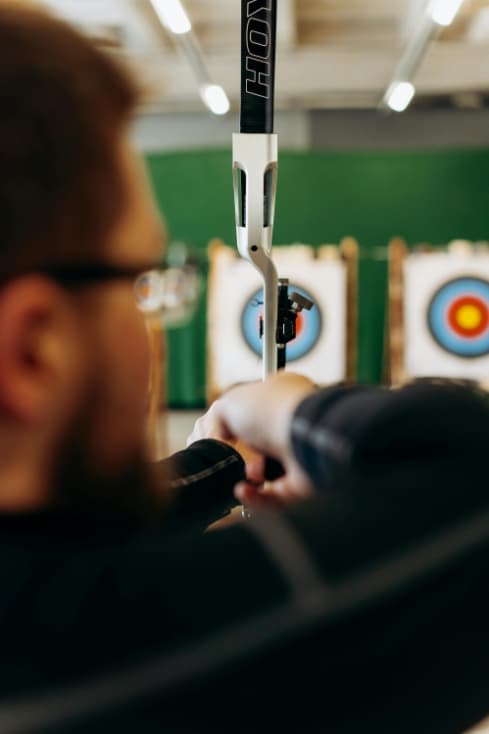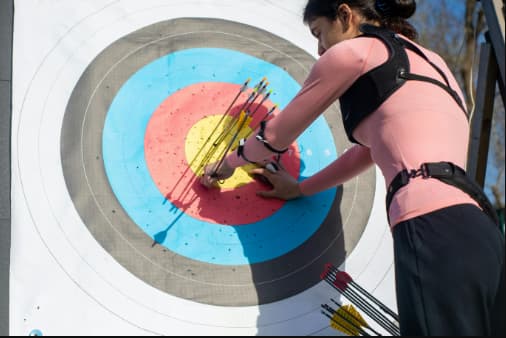Sport shooting is a globally recognized activity, but its cultural significance and practices can vary greatly depending on the region. Each country brings unique traditions, laws, and competitive styles to the sport, making it not only a test of precision and skill but also a reflection of local culture and history. This article explores these fascinating differences, shedding light on how sport shooting is perceived and practiced across continents. If you are interested in getting a deeper understanding of these nuances, a Ghostwriter Agentur can help in crafting detailed, well-researched articles on such topics. In this exploration, we’ll look at various aspects of sport shooting, from its legal frameworks to the way different countries have embraced or restricted it. The aim is to uncover the ways sport shooting serves as both a competitive pursuit and a cultural expression across the globe.
Legal Frameworks and Gun Culture
One of the most significant differences in sport shooting between countries is the legal framework surrounding gun ownership and usage. While some countries, like the United States, have a deeply ingrained gun culture that supports the sport with relatively relaxed regulations, other regions impose strict laws, which in turn affect the accessibility and popularity of sport shooting.
United States: The Epicenter of Gun Culture
In the United States, sport shooting is intertwined with the broader context of gun ownership. The country’s Second Amendment grants citizens the right to bear arms, making the U.S. one of the most liberal countries regarding gun laws. Consequently, sport shooting is widely accessible, and a variety of disciplines flourish—from target shooting and hunting to more specialized forms like cowboy action shooting. The National Rifle Association (NRA) plays a significant role in promoting shooting sports, organizing competitions and events that draw participants from all walks of life. The American culture around guns and sport shooting has even shaped its portrayal in media, where competitive shooting often intersects with themes of self-defense and personal freedom.
Europe: Strict Regulations, Specialized Competitions
In contrast to the U.S., most European countries have stringent gun control laws, and sport shooting is often highly regulated. In countries like the UK and Germany, civilians can only acquire firearms for sport shooting under strict conditions, and all guns must be registered. However, this does not diminish the popularity of the sport. Europe has a rich history of shooting competitions, particularly in Olympic disciplines such as skeet shooting and biathlon. Germany, for instance, has a longstanding tradition of Schützenvereine (shooting clubs), where members practice shooting as a communal activity. The sport in Europe is typically seen as a highly disciplined and regulated practice, closely tied to tradition and honor rather than a symbol of personal freedom.
Japan: Tradition Meets Restriction
Japan represents one of the strictest countries regarding gun laws, and as a result, sport shooting is highly restricted. The Japanese government enforces rigorous background checks and mental health assessments before allowing citizens to own firearms, and even then, ownership is limited to shotguns and air rifles for sport. Despite these limitations, Japan has a strong tradition of competitive archery and air rifle shooting. Japanese sport shooting reflects the country’s cultural values of precision, discipline, and respect for rules, with competitions often regarded as high-stakes, highly formal events.
Influence of Historical and Cultural Traditions
The historical context of sport shooting plays a significant role in shaping how it is perceived and practiced in different countries. While some regions view it as a leisure activity, others see it as a deep-rooted tradition tied to national identity or military history.
Scandinavia: Precision and Hunting Heritage
In countries like Norway, Sweden, and Finland, sport shooting is closely linked to the tradition of hunting. Scandinavia has a long history of both hunting and marksmanship, and these activities are often passed down through generations. Biathlon, a winter sport combining cross-country skiing and rifle shooting, originated in this region and is a testament to the endurance and precision valued in Scandinavian culture. Hunting in these countries is not just about sport but also about sustainability and respect for nature, with strong ethical codes governing the activity.
Russia: Military Tradition and Competitive Shooting
Russia has a rich military history, and this has influenced the country’s approach to sport shooting. Competitive shooting is deeply ingrained in Russian culture, with the Soviet Union historically dominating the Olympic shooting events. Even today, Russia continues to be a powerhouse in the shooting sports, with national programs designed to cultivate young talent. Russian shooting competitions often emphasize endurance and accuracy, and there is a strong overlap between civilian sport shooting and military training. The government supports various shooting schools and clubs, recognizing the sport as a way to build discipline and patriotism.
Middle East: Cultural Shifts and Modern Competitions
In the Middle East, sport shooting is often seen as a symbol of prestige and skill, particularly in the Gulf States. Traditionally, hunting with falcons and archery were common pastimes, but in recent years, modern shooting sports have gained popularity. Countries like the UAE and Qatar have invested heavily in building world-class shooting ranges and hosting international competitions. The sport here is often viewed as a blend of tradition and modernity, with participants taking pride in their marksmanship as a reflection of their heritage.
Gender and Sport Shooting: A Global Perspective
Gender plays a significant role in how sport shooting is perceived and practiced in different parts of the world. In many countries, the sport has historically been male-dominated, but this is slowly changing as more women become involved in competitive shooting.
United States: Increasing Female Participation
In the United States, the number of women participating in sport shooting has seen a significant rise over the past few decades. Female shooters compete at all levels, from local competitions to international events, and organizations like the NRA have developed programs to encourage female participation. Women in the U.S. often see shooting as a way to gain confidence and self-defense skills, and their presence in the sport challenges traditional gender roles associated with firearms.
Europe: A Tradition of Inclusivity
In Europe, gender inclusivity in sport shooting has a longer history. In countries like Finland and Sweden, women have been competing alongside men for decades. Many European shooting clubs promote inclusivity, and some have a higher percentage of female members than male. In disciplines like biathlon and Olympic skeet shooting, European women have consistently achieved international success, challenging the perception that shooting is a male-dominated sport.
Middle East: Breaking Barriers
In the Middle East, women are beginning to break into the sport shooting scene, particularly in countries like the UAE. Female athletes in the region often face cultural and societal barriers, but their involvement in shooting sports is growing. The establishment of female-only shooting clubs and events has encouraged more women to take up the sport, and international competitions now feature Middle Eastern women on the podium.

Competitive Styles and Techniques
The techniques and competitive styles in sport shooting can differ widely depending on the country. Some regions emphasize speed and accuracy, while others focus on endurance or team-based competitions.
United States: Precision and Speed
In the U.S., speed shooting competitions like IPSC (International Practical Shooting Confederation) and cowboy action shooting are particularly popular. These competitions prioritize not only precision but also the ability to shoot quickly and efficiently. American shooting styles are often rooted in practicality, mirroring the country’s broader gun culture, where firearms are viewed as tools for both sport and defense.
Europe: Focus on Precision and Discipline
European shooting competitions, particularly in Olympic disciplines, tend to emphasize precision and control. Events like 10-meter air rifle or 50-meter pistol require a high degree of concentration and steadiness. The focus is on hitting small targets from long distances, and success often comes down to minor adjustments in technique and breathing.
Asia: Emphasis on Technique and Ritual
In countries like Japan and South Korea, the act of shooting is almost ritualistic. Precision and control are highly valued, and competitors are trained to approach each shot with a methodical mindset. The sport is often tied to traditional values of patience and perseverance, with techniques passed down through generations.
Conclusion
Sport shooting is a globally diverse practice, shaped by cultural, historical, and legal differences. While the core principles of accuracy and discipline remain constant, each country brings its own flavor to the sport, whether through strict regulations, military influences, or cultural traditions. Understanding these differences not only enriches one’s appreciation for sport shooting but also highlights the ways in which a global pastime can reflect the unique values of different societies. Whether you are a casual enthusiast or a seasoned competitor, exploring these cultural nuances offers a fascinating glimpse into how sport shooting is more than just a test of skill—it’s a window into the world’s varied cultural landscapes.
